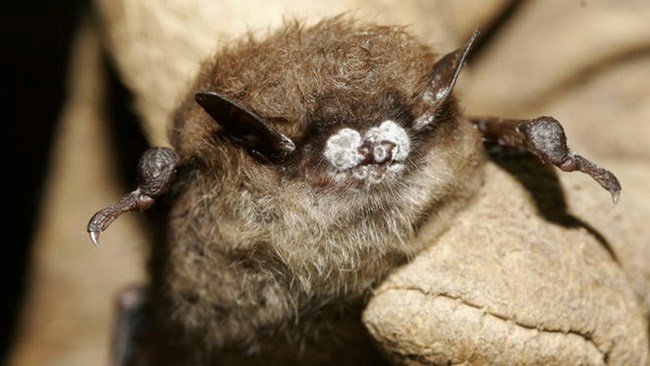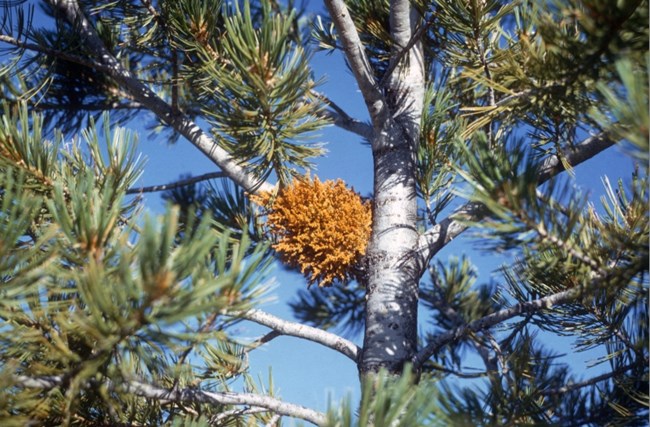
USFWS Photo Diseases may affect both plants and animals at Craters of the Moon. White-nose SyndromeSomething is killing whole wintering populations of bats in North America as they hibernate in caves and mines. This affliction has been given the name white-nose syndrome (WNS) because of the telltale white fungus growing on the noses of some infected bats. Only recently described as a new species, Pseudogymnoascus destructans (Pd) may appear on the wings, ears, and/or tail membranes of afflicted bats, but may also be absent. Signs of WNS
How WNS is SpreadBat to Bat: Bat to bat transmission of Pd has been documented in lab conditions and the geographic pattern of spread appears to support lab findings. It is also possible that other unknown agents associated with WNS are spread bat to bat. How Can You Help?

NPS Photo Tree PathogensDwarf mistletoe and white pine blister rust are two diseases of concern at Craters of the Moon. Both affect limber pine, which account for over 95 percent of the forested acres in the monument. Dwarf mistletoe (Arceuthobium spp.) is a native infectious parasitic organism that establishes itself on hosts such as limber pine trees. Dwarf mistletoe can reduce the vigor and growth of infected trees by appropriating water and nutrients, and disturbing the normal physiological processes of the tree. Heavy dwarf mistletoe infections increase the susceptibility of the trees to attacks by bark beetles and to other environmental stresses. In some cases, it may kill the tree by slowly robbing it of food and water. Death occurs slowly in most cases and depends on the severity of infection and on the vigor and size of the tree. Control efforts in the 1960’s resulted in the removal of 6,000 limber pine trees but were still unsuccessful in eliminating the disease. Today, dwarf mistletoe is recognized as a natural parasitic organism that has been a part of the Craters of the Moon limber pine ecology for thousands of years. It is an issue of “which is worse, the disease or the cure?” |
Last updated: February 16, 2023
